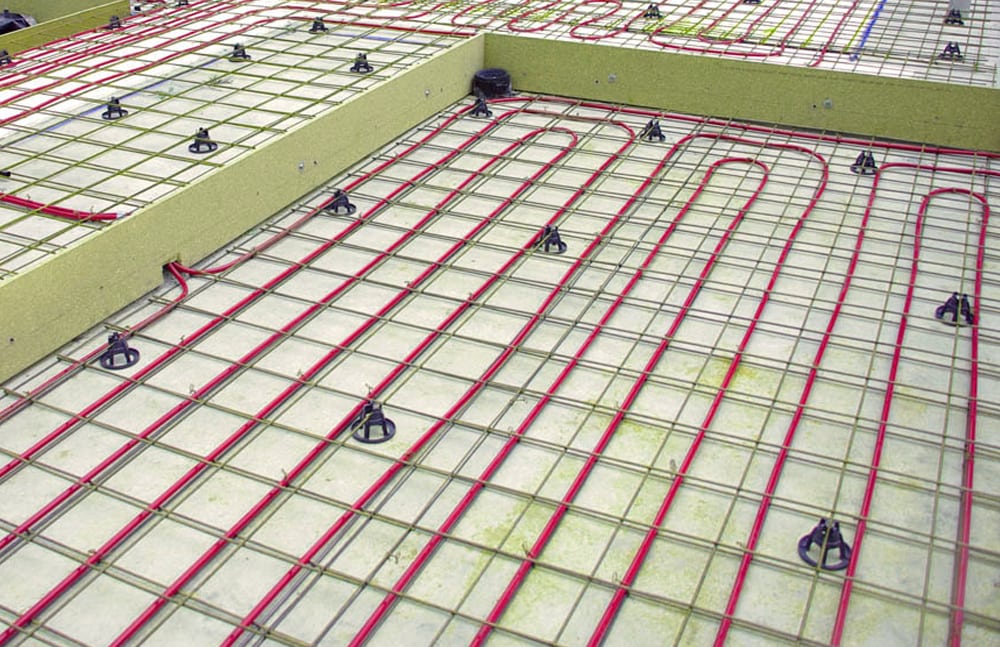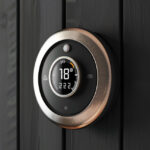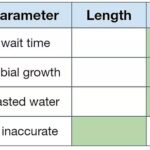
Heat Pump COP and SCOP: What They Mean and Why They Matter
In this guide, we explore the significance of heat pump COP and SCOP, essential factors to consider when choosing a heat pump, and tips to optimise its performance for increased energy efficiency and cost savings.

Download your free PDF of this article below.
Introduction
Heat pumps have become increasingly popular as an energy-efficient alternative to traditional heating and cooling systems.
A crucial aspect of evaluating the performance of a heat pump is understanding its Coefficient of Performance (COP) and Seasonal Coefficient of Performance (SCOP).
In this article, we will discuss the importance of heat pump COP and SCOP, how to calculate them, and how to select a heat pump with the right COP and SCOP for your needs.
Understanding Heat Pumps
Types of Heat Pumps
There are three primary types of heat pumps:
- Air source
- Water source
- Geothermal
Each type works by transferring heat between different sources (air, water, or the ground) and the building it’s designed to heat or cool.
How Heat Pumps Work
Heat pumps work on the principle of heat exchange.
They use a refrigerant to absorb heat from one source (e.g. the outside air) and then release it into another (e.g. your home).
This process can be reversed to provide cooling during warm seasons.
Coefficient of Performance (COP)
Importance of COP
The COP is a crucial metric for determining the energy efficiency of a heat pump.
It measures the ratio of the heating or cooling output to the electrical energy input.
A higher COP means that the heat pump is more efficient at converting electricity into heating or cooling.
Factors Influencing COP
Several factors can impact a heat pump’s COP, including:
- The outdoor temperature
- The type of heat pump
- The system design
Tip: As the outdoor temperature drops, the COP of an air-source heat pump decreases, whereas ground-source heat pumps maintain a more consistent COP throughout the year.
Seasonal Coefficient of Performance (SCOP)
What is SCOP?
The Seasonal Coefficient of Performance (SCOP) is a metric that measures the energy efficiency of a heat pump over an entire heating season.
Unlike the COP, which provides a snapshot of the heat pump’s efficiency at a specific moment, SCOP takes into account the varying outdoor temperatures and operating conditions throughout the season, giving a more comprehensive picture of the heat pump’s overall performance.
Why SCOP Matters
SCOP is particularly relevant in regions with significant temperature fluctuations throughout the heating season.
By considering the heat pump’s efficiency over a range of temperatures, SCOP provides a more accurate representation of the system’s performance and energy savings potential.
This information can be useful when comparing different heat pump models and making informed decisions about the most suitable system for your home.
Calculating Heat Pump COP
Heat Pump COP Formula
The formula for calculating the heat pump COP is:
COP = Heating or Cooling Output / Electrical Energy Input
Heat Pump COP Example Calculation
Let’s say you have a heat pump with a heating output of 36,000 BTUs (British Thermal Units) and an electrical energy input of 3,000 watts.
First, we need to convert the watts to BTUs by multiplying the number of watts by 3.412 (1 watt = 3.412 BTUs):
3,000 watts * 3.412 = 10,236 BTUs
Now, plug the numbers into the formula:
COP = 36,000 BTUs / 10,236 BTUs
COP = 3.5
This means that for every 1 BTU of electrical energy consumed, the heat pump provides 3.5 BTUs of heating output.
COP and Efficiency
A heat pump’s COP can be used to calculate its efficiency.
For example, a heat pump with a COP of 3.0 is 300% efficient, meaning it provides three units of heat or cooling for every unit of electrical energy consumed.
Keep in mind that a higher COP indicates a more energy-efficient heat pump.
Calculating Heat Pump SCOP
Calculating SCOP accurately requires following specific standards and guidelines, such as the European Standard EN 14825.
European Standard EN 14825 provides a detailed methodology for calculating the SCOP for heat pumps, including the required climate data, test procedures, and temperature profiles for each climate zone.
Here is a general outline of the process for calculating SCOP accurately:
- Identify the climate zone:
- Determine the climate zone for the location where the heat pump will be installed, as specified by the relevant standard (e.g. EN 14825).
- Each climate zone has a specific temperature profile that represents the typical heating or cooling season for that region.
- Obtain the heat pump’s performance data:
- Collect the heat pump’s performance data, including its COP at various outdoor temperatures.
- Manufacturers usually provide this information in the heat pump’s technical specifications or test reports.
- Conduct tests:
- Perform tests according to the standard’s guidelines to obtain the heat pump’s efficiency at different operating conditions.
- These tests typically involve measuring the heat pump’s heating or cooling capacity and power consumption at various outdoor temperatures that correspond to the temperature profiles for the specific climate zone.
- Calculate the weighted COP:
- For each temperature point in the temperature profile, multiply the heat pump’s COP at that temperature by the corresponding weighting factor provided by the standard.
- The weighting factor represents the proportion of the season that the heat pump operates at that temperature. Sum the weighted COP values for all temperature points to obtain the SCOP.
Please note that calculating the SCOP accurately involves specialised equipment, technical expertise, and knowledge of the relevant standards.
It is usually performed by manufacturers or independent testing organizations during the heat pump’s design and certification process.
As an end-user, you can rely on the SCOP values provided by the manufacturer or look for third-party certifications that confirm the heat pump’s performance and efficiency.
Heat Pump SCOP Example Calculation
As mentioned earlier, the SCOP calculation depends on several factors and requires predefined climate zones and specific temperature profiles for each zone, as outlined by the European Standard EN 14825.
However, below is a simplified example to help you understand the concept of SCOP calculation.
Let’s say we have a heat pump and we want to calculate its SCOP based on the following three temperature ranges during the heating season:
- Temperature range A: -10°C to 0°C
- Temperature range B: 0°C to 10°C
- Temperature range C: 10°C to 20°C
We also have the heat pump’s COP at the average temperature for each range:
- COP at -5°C (average of range A): 2.0
- COP at 5°C (average of range B): 3.0
- COP at 15°C (average of range C): 4.0
Additionally, we need to know the percentage of the heating season the heat pump operates within each temperature range:
- Percentage of time in range A: 20%
- Percentage of time in range B: 50%
- Percentage of time in range C: 30%
To calculate the SCOP, we’ll multiply the COP at each temperature range by the percentage of time the heat pump operates in that range and sum the results:
SCOP = (COP at -5°C x percentage of time in range A) + (COP at 5°C x percentage of time in range B) + (COP at 15°C x percentage of time in range C)
SCOP = (2.0 x 0.2) + (3.0 x 0.5) + (4.0 x 0.3) = 0.4 + 1.5 + 1.2 = 3.1
In this simplified example, the heat pump’s SCOP is 3.1.
Please note that this is a basic example, and actual SCOP calculations involve more complex procedures and climate-specific data as outlined in the relevant standards like EN 14825.
Selecting a Heat Pump with the Right COP and SCOP
What to Consider
When selecting a heat pump, it’s essential to consider both the COP and SCOP in conjunction with other factors like climate, installation costs, and maintenance requirements.
Energy Star Ratings
Heat pumps with an Energy Star rating typically have a higher COP and SCOP, which means they meet strict energy efficiency guidelines set by agencies such as the U.S. Environmental Protection Agency.
Choosing an Energy Star-rated heat pump can help ensure that you’re investing in an energy-efficient system.
Tips to Improve Heat Pump COP and SCOP
Some ways to improve your heat pump’s COP and SCOP include:
- Regular maintenance: Schedule routine maintenance to ensure your heat pump is running efficiently. This includes cleaning or replacing filters, checking for refrigerant leaks, and inspecting the system components.
- Proper insulation: Ensure your home is adequately insulated to minimise heat loss and maintain a consistent indoor temperature, allowing your heat pump to work more efficiently.
- Optimal thermostat settings: Use a programmable thermostat to maintain the optimal temperature settings for your heat pump, maximising its COP and SCOP.
- Correct system sizing: Installing a correctly sized heat pump for your home ensures that it operates at peak efficiency.
- Upgrade to a more efficient model: If your heat pump is outdated, consider upgrading to a newer, more energy-efficient model with a higher COP and SCOP.
Advantages and Disadvantages of Heat Pumps
Advantages:
- Energy-efficient: Heat pumps can be more energy-efficient than traditional heating and cooling systems, leading to lower energy bills.
- Environmentally friendly: Since heat pumps use electricity instead of burning fossil fuels, they produce fewer greenhouse gas emissions.
- Heating and cooling in one system: Heat pumps provide both heating and cooling, eliminating the need for separate systems.
Disadvantages:
- High upfront costs: Heat pumps can have higher upfront costs than traditional systems, although the long-term energy savings may offset this.
- Reduced performance in extreme temperatures: The COP of air-source heat pumps can drop in very low outdoor temperatures, reducing their efficiency.
Conclusion
Understanding the heat pump COP and SCOP is essential when evaluating the energy efficiency of these systems.
By considering the COP and SCOP, along with other factors like climate, installation costs, and maintenance requirements, you can make an informed decision when selecting a heat pump for your home.
Additionally, taking steps to improve your heat pump’s COP and SCOP can lead to even greater energy savings and overall system performance.
h2x will provide accurate calculations for your design based all of your chosen design parameters and system layout.
In addition, h2x provides automated calculations for flow rates, velocities, pressures, pump duties, plant sizing, and recirculation systems mean that you can focus on your project’s design instead of undertaking tedious calculations.
h2x’s straightforward user interface helps engineers produce high-quality designs and work more efficiently, all while adhering to industry regulations.
The software has already been used to size millions of kilometres of pipes in projects across the world.
Book a demo or start your free trial today to discover how h2x can help you improve your design and calculation workflow.
Heat Pump COP FAQs
What is a good heat pump COP and SCOP?
A good heat pump COP is generally between 3.0 and 5.0, and a good SCOP is typically above 3.5, indicating that the system provides efficient heating or cooling over the entire season.
Do heat pumps lose efficiency over time?
Yes, heat pumps can lose efficiency over time due to wear and tear on the system components.
Regular maintenance can help prolong the efficiency and lifespan of your heat pump.
Can I use a heat pump in a cold climate?
While heat pumps are generally more efficient in milder climates, certain models are designed to work well in cold climates.
Ground-source heat pumps and cold climate air-source heat pumps can maintain a higher COP and SCOP even in colder temperatures.
Are heat pumps more expensive to run than gas furnaces?
The operating cost of a heat pump depends on the local electricity and gas rates.
In areas with low electricity rates, heat pumps can be less expensive to run than gas furnaces.
However, in areas with high electricity rates, the operating costs may be higher.
How long do heat pumps typically last?
The average lifespan of a heat pump is between 10 to 15 years.
With proper maintenance and care, some heat pumps can last up to 20 years.
h2x: All-In-One Tool for Calculating, Designing, Estimating, and Paperwork

What's in the Pipeline?
Get technical resources delivered to your inbox weekly!
Testimonials
What Installers Say
What Consultants Say
A game changer for the humble plumber. Incredible.
Brad Winkel
Director at Queenstown Plumbing
Brilliant, simple and easy to use. Game changer.
James Major
Director at Hubb
Big time game changer to the industry!
Viv Jude
Director at UHC
Incredible software! Super user-friendly and allows you to save so much time.
Devni Gamage
Engineer at DMA
h2x is great software, our company use it nearly every day. It is easy to use with direct conversion from h2x to Revit.
Callum Craig
Engineer at WDE
h2x is fantastic software. It is very easy to use and the ability to output to Revit is a fantastic time saver.
Joe Kirrane
Engineer at MEP












